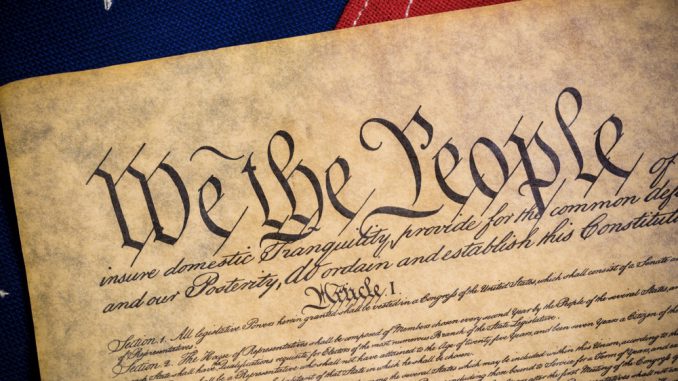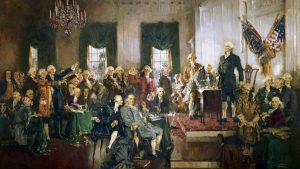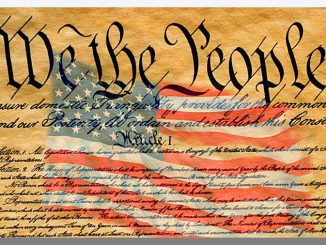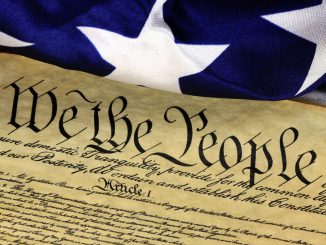
The U. S. Constitution: Simplied…Abbreviated for beginning understanding or quick reference
|
When you just want to get the general or simplified idea of what is covered, TFP offers an abbreviated version of the U.S. Constitution. Think of this as your “pocket version” of the full Constitution. It is not meant to be a version for legal purposes or study. It is meant to give our members the general idea of each portion of the Constitution for better understanding or a beginning approach to learning about the greatest document of freedom the world had experienced. Look for general definitions at the end of this simplified version. The full, original transcription of the U. S. Constitution is also available on TFP’s website at https://thefoundingproject.com/constitution-united-states-exact-transcription/ US Constitution Simplified: When Was the Constitution Written?The US Constitution was put into writing on September 17, 1787 by the Constitutional Convention. The original US Constitution is housed in the National Archives in Washington, D.C. US Constitution Simplified: The Structure
US Constitution Simplified: The Elements and Summary of the Constitution
|
||||||||||||||||||||||||||||||||||||||||||||||||||||||||||||||||||||||||||||||||||||||||||||||||||||||||||||||||||||||||||||||||||||||||||||||||||||||||||||||||||||||||||||||||||||||||||||||||||||||||||||||||||
US Constitution Simplified: The Purpose of the Constitution of America
Why do we have a constitution? The purpose of the US Constitution, and the six functions of government, are described in the Preamble (the opening statement). The purpose of the US Constitution prescribing the government of America was designed to ensure the happiness and well being of American citizens. Without the Constitution, governmental power would not be defined or limited and the rights of all citizens would not be protected.
The purpose of the US Constitution is:
|
||||||||||||||||||||||

https://thefoundingproject.com/constitution-united-states-exact-transcription/ http://www.atlcomputing.com/aaron/info/easy_constitution.htm. https://teachingcivics.org/wordpress/wp-content/uploads/2013/10/Simplified-United-States-Constitution-and-Bill-of-Rights.pdf




There is a Director who teaches the Constitution to Sheriff’s and Police. He also teaches a group of Republicans. However he speaks for hours and not many come away with what the Constitution is about. With this information I will put it in the paper. I appreciate whoever put this all together.
We appreciate your support. Please be certain to credit The Founding Project with the information. Thanks!
Thank you. PLEASE do us the courtesy of listing The Founding Project as your source.
Just looking to establish a better knowledge of the United States Constitution.
Thanks George
Thanks, George.
Please invite your friends to “Like” our Facebook page and to frequent our site!